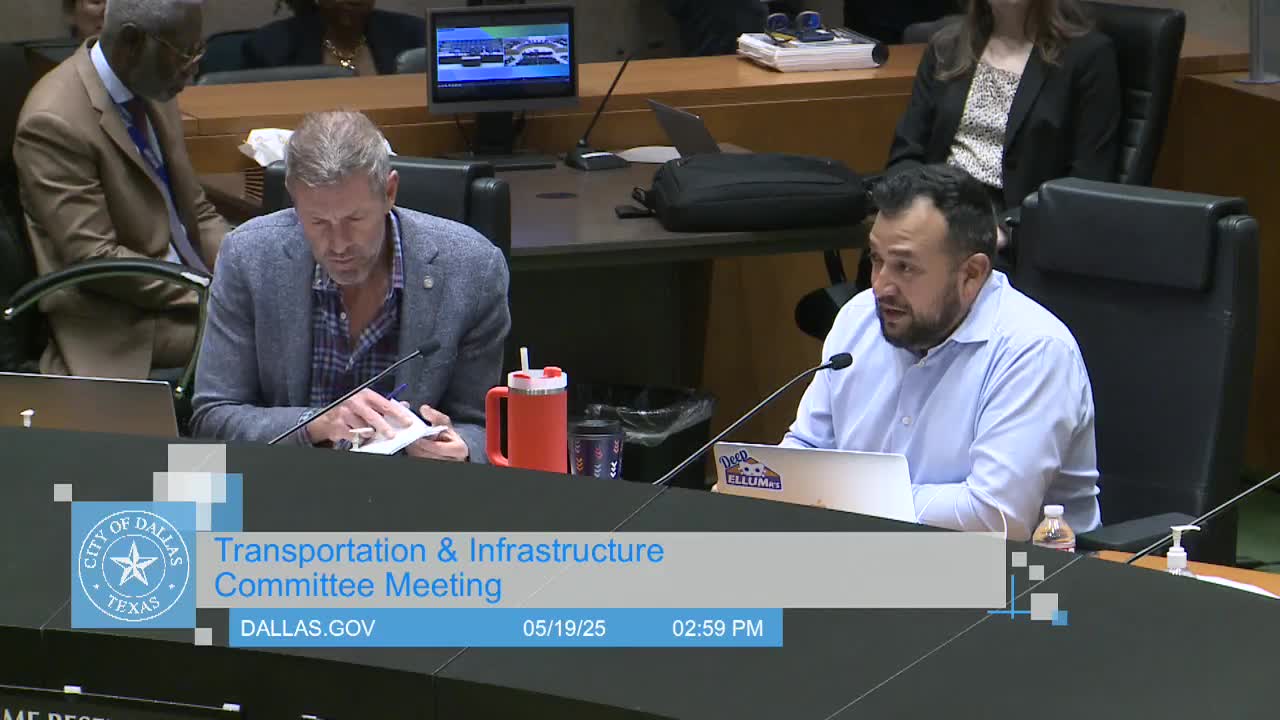City officials implement interim street redesigns to address safety concerns
May 19, 2025 | Dallas, Dallas County, Texas
This article was created by AI summarizing key points discussed. AI makes mistakes, so for full details and context, please refer to the video of the full meeting. Please report any errors so we can fix them. Report an error »

In a recent government meeting focused on transportation and infrastructure in Dallas, officials discussed critical strategies for improving road safety and urban design. The meeting highlighted the urgent need for both short-term and long-term solutions to address ongoing traffic accidents and fatalities.
One of the primary concerns raised was the lengthy process involved in redesigning streets, which can take years from conceptual planning to actual implementation. Council members emphasized the importance of interim measures to enhance safety while more comprehensive projects are developed. For instance, a successful pilot program was previously implemented on Jefferson Street, where a lane reduction was tested for three months before moving forward with permanent improvements funded in the 2024 bond.
Current initiatives include the installation of pedestrian hybrid beacons near schools, particularly on Ferguson Road, which is set to receive significant funding for upgrades. These interim measures aim to reduce accidents and fatalities while allowing city planners to test concepts before committing to larger expenditures.
Additionally, the meeting addressed the development of a new street design manual, which is being refined with input from stakeholders. This comprehensive document aims to standardize improvements across the city, including updates to bike lane components, which are pending the completion of the city's bike plan.
Overall, the discussions underscored a proactive approach to urban planning in Dallas, balancing immediate safety needs with long-term infrastructure goals. As these initiatives progress, city officials are committed to ensuring that the implemented changes effectively enhance community safety and mobility.
One of the primary concerns raised was the lengthy process involved in redesigning streets, which can take years from conceptual planning to actual implementation. Council members emphasized the importance of interim measures to enhance safety while more comprehensive projects are developed. For instance, a successful pilot program was previously implemented on Jefferson Street, where a lane reduction was tested for three months before moving forward with permanent improvements funded in the 2024 bond.
Current initiatives include the installation of pedestrian hybrid beacons near schools, particularly on Ferguson Road, which is set to receive significant funding for upgrades. These interim measures aim to reduce accidents and fatalities while allowing city planners to test concepts before committing to larger expenditures.
Additionally, the meeting addressed the development of a new street design manual, which is being refined with input from stakeholders. This comprehensive document aims to standardize improvements across the city, including updates to bike lane components, which are pending the completion of the city's bike plan.
Overall, the discussions underscored a proactive approach to urban planning in Dallas, balancing immediate safety needs with long-term infrastructure goals. As these initiatives progress, city officials are committed to ensuring that the implemented changes effectively enhance community safety and mobility.
View full meeting
This article is based on a recent meeting—watch the full video and explore the complete transcript for deeper insights into the discussion.
View full meeting
